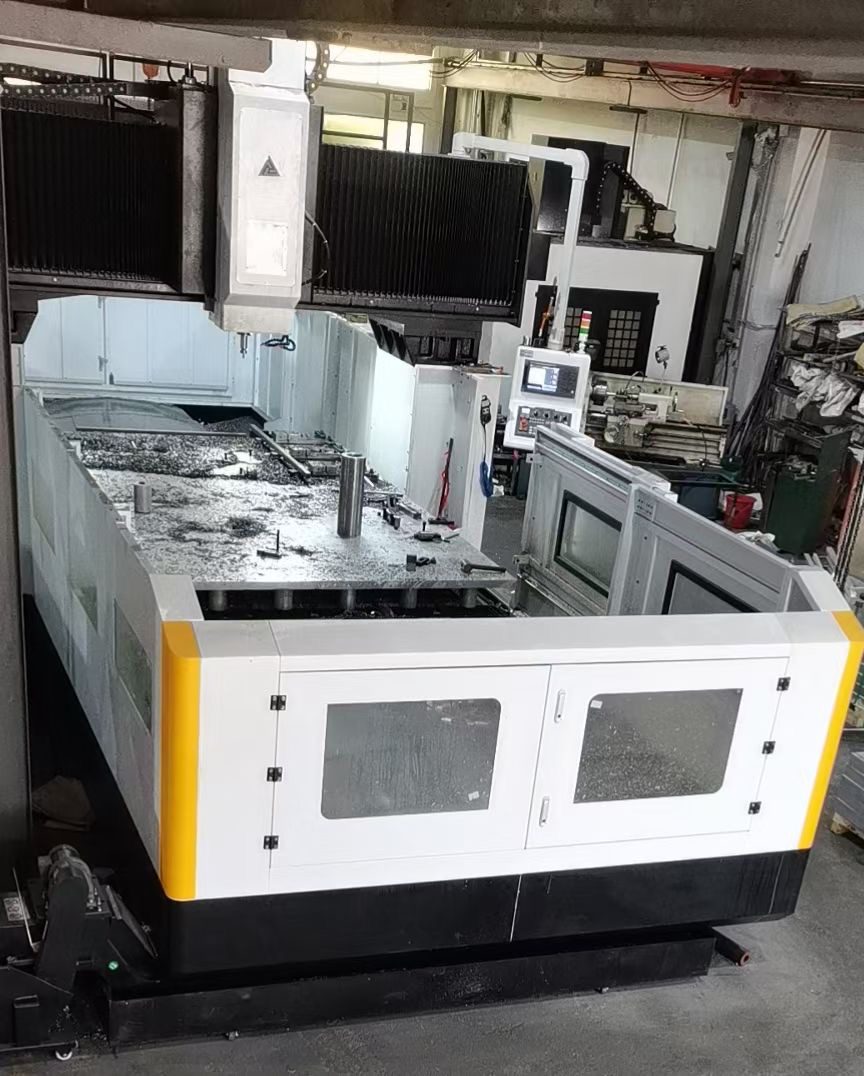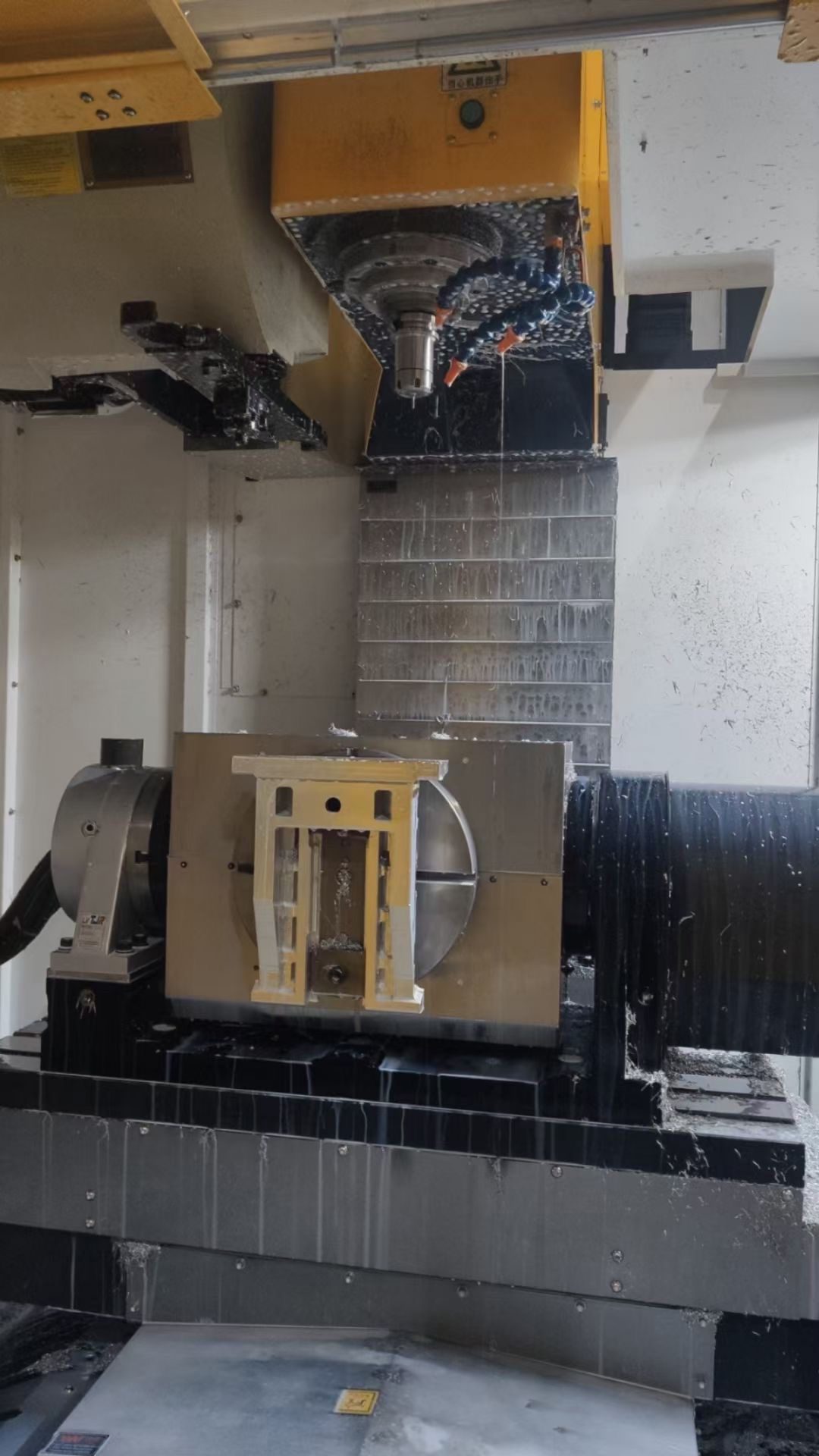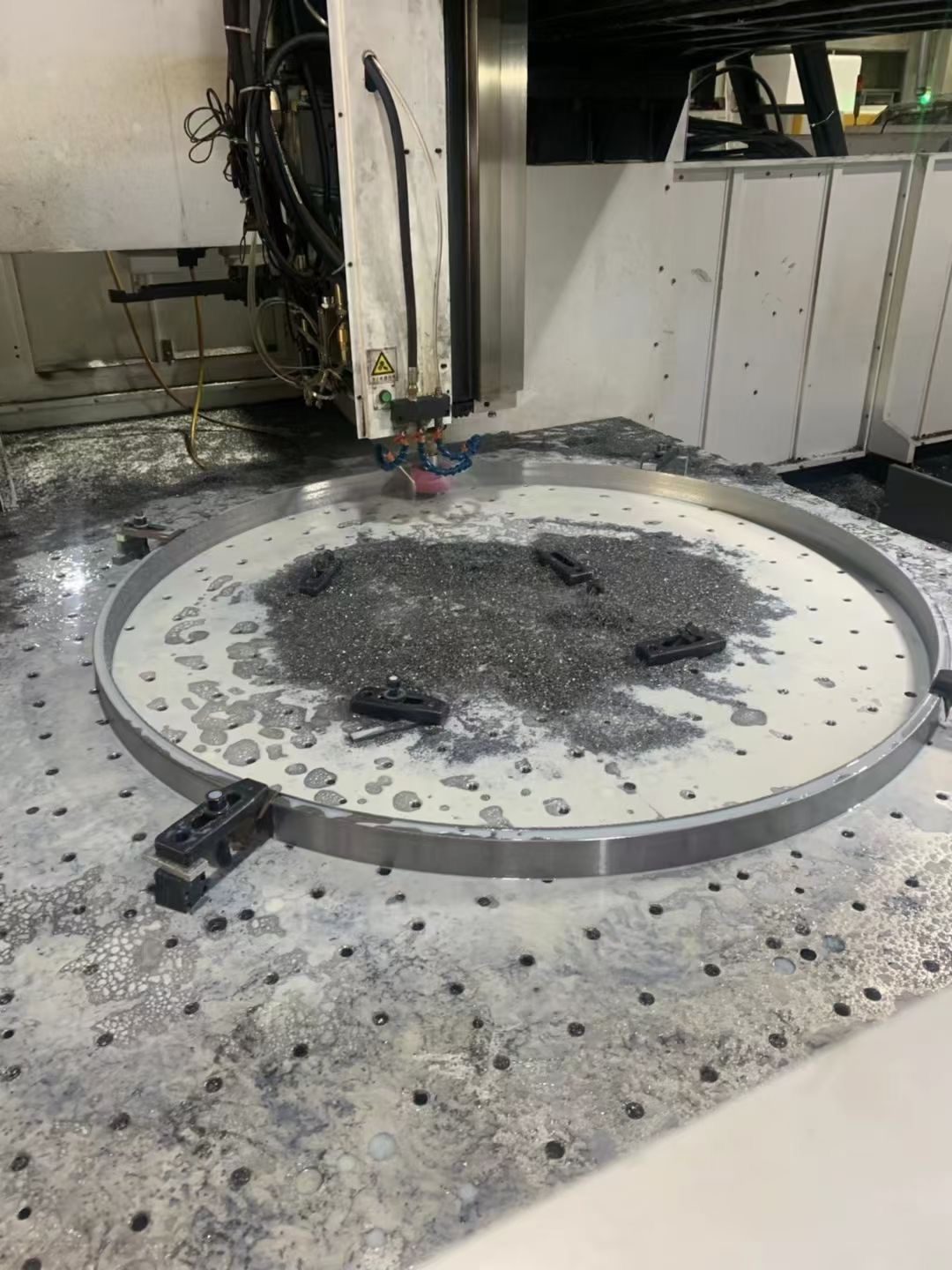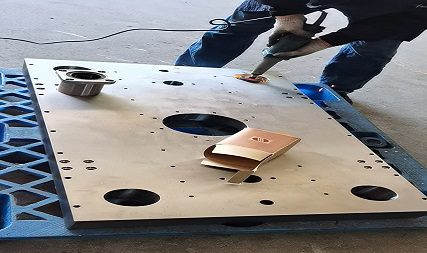Large CNC machining Parts Capabilities,Considerations and Applications
Introduction
Large CNC machining parts are engineered components that are too large to be produced using traditional methods. A large part is typically made using a computer numerical control (CNC) machine, an industrial robot. CNC machines can have many large diameter machining parts and equipment, including simple and complex shapes. It is capable of handling large machining projects. There are several factors to consider when designing a piece for machining on a CNC machine. The most important consideration is the size and shape of the part. When choosing a CNC machining services provider, it's essential to consider their capabilities and capacity and any special considerations required for your project.

Large CNC machining parts are engineered components that are too large to be produced using traditional methods. A large part is typically made using a computer numerical control (CNC) machine, an industrial robot. CNC machines can have many large diameter machining parts and equipment, including simple and complex shapes. It is capable of handling large machining projects. There are several factors to consider when designing a piece for machining on a CNC machine. The most important consideration is the size and shape of the part. When choosing a CNC machining services provider, it's essential to consider their capabilities and capacity and any special considerations required for your project.
Customers must inquire about the large CNC machining capabilities before calling for machining services. Some materials are more difficult for machines, such as steel, stainless steel, cast iron, alloy steel, etc. Some can easily be machined, such as low-grade carbon steel and plastics, among other materials.
CNC machining services can vary widely in terms of their capabilities and capacities. They are made using a precision manufacturing process involving computer numerically controlled (CNC) machines. These parts are typically large and can be used in various settings, including manufacturing plants, construction sites, and other industrial or commercial facilities.
The manufacturing process for Large diameter CNC machining Parts begins with creating a digital model of the part. This model is created using CAD software, and it contains all of the information needed to make the part using a CNC machine. After completing the model, it is then sent to a manufacturer who will use it to create a part prototype. To guarantee that it fulfills all of the criteria specified by the customer, the testing of a prototype takes place. The prototype is revised until it meets all customer specifications if any changes are needed. After approval of the prototype, then we can begin the manufacturing process.
Finally, the application of the part will also influence its design. Elements that will be used in high-stress applications, for example, will need to be designed differently than parts that will be used in low-stress applications. Large CNC machining parts offer several benefits over traditional manufacturing methods. They are faster and have more precision than conventional methods, and they can produce a broad range of different components. Additionally, they are less expensive to produce than parts manufactured using traditional methods.
Table of Content
Significant Part CNC Machining Capabilities
Large Part CNC Machining allows for the engineering of large components. Because the machine is so tiny, the size of the piece produced is restricted only by the device's dimensions. Metals and plastics are two of the many materials used to make components. A large machining project is a versatile process that can create complex shapes and features. The most common types a significant part of CNC machining processes are milling and turning. The part is cut away using a rotating machine tool in the milling machining process. The part is rotated in the turning machining process while a stationary machine tool removes the material. Both machining operations can be used to create complex shapes and features.
Extensive CNC machining services offer many advantages over traditional manufacturing methods. It is a one roof precise process that can produce high-quality parts with excellent precision. It is also a fast process, and components can be machined in large capacity quickly and efficiently.
As many manufacturers know, alloy steels are among the most challenging materials to machine. But with the right CNC machining capabilities and processes in place, alloy steels can be machined precisely.
Horizontal Boring Mills
(HBMs) are a type of CNC milling machine specifically designed for the precision CNC machining of large parts. Horizontal machining centers machine significant components such as engine blocks, gearboxes, and chassis assemblies. They are available in both manual and CNC versions.
HBMs are different from other mills in that they have a horizontal spindle instead of a vertical spindle. This allows the cutter to move along the X and Y axes and on Z-axis in some cases, rather than up and down. This makes it easier to reach all areas of the job being machined. The HBM also has a large table that can accommodate large parts.
The main processes performed on horizontal boring mills are drilling, reaming, and boring. Drilling is creating a hole in a material with a drill bit. Reaming is enlarging a hole in a material with a reamer. Boring is the process of cutting a circular hole in a material with a cutter head.
The HBM is a powerful machine that can produce high-quality parts quickly and efficiently. It is the perfect machine for precision machining large parts with complex shapes and features.

CNC Vertical Milling
CNC vertical milling is a subtractive manufacturing process equipped with a milling cutter to remove material from a workpiece. The blade revolves around the workpiece as it is held stationary. The workpiece is also moved on the X-axis and Y-axis beneath the cutter in many cases.
CNC Vertical Milling can produce a wide variety of parts and components. It is especially well-suited for machining complex shapes and features. Additionally, CNC Vertical Milling has parts with high accuracy and repeatability. Vertical Milling operation is a versatile manufacturing process that can manufacture a broad number of products.
The accuracy and speed of the CNC vertical milling process make it the ideal choice for machining large types of parts. In addition, the cost of owning and operating CNC vertical milling machines is much lower than the cost of owning and operating CNC lathes. This makes the CNC vertical milling machine the perfect choice for small businesses and hobbyists who need to machine various parts.

Considerations
When machining large parts on a CNC machine, there are three primary considerations: design, machining, and tooling. The first consideration is the design of the part. The part must be designed to be machinable, taking into account the limitations of the CNC process. The second consideration is the machining of the part. The part must be manufactured efficiently and produces a quality product, whether the process is threading or welding. The third consideration is the tooling used to machine the part. The right tools must be selected for extensive machining to ensure that the part is machined correctly.
Design considerations
When designing a large diameter part for CNC machining, there are several things to keep in mind. The first thing is size and shape. The three dimensions of the part to be machined may not hinder the movement of the machine tool. Secondly, the product design should not be an obstacle in pre and post-machining operation. Rework should be avoided by taking the surface finishing process at the end. Thirdly, the product design allows easy assembly on the CNC machine.
Machining Considerations
Machining large parts is not an easy job. Many challenges come with machining large parts on a large CNC machine. Welding, forgings, and other processes must be carefully considered to ensure the final product's quality and accuracy. A few possible challenges are discussed below.

Heat Treating
Heat treating is often necessary to ensure that the alloy steel can be machined without breaking or warping.
Threading
Threading capacity is one of the most critical considerations when machining large parts on a CNC machine. The threading capacity of a CNC machine is determined by the size of the spindle and the travel of the carriage.
Oversize
When machining large parts, there are multiple difficulties. Oversized details, for example, must frequently be transferred swiftly between tools or locations. When providing rush services or secondary services or doing a machining project, CNC machines must be capable of handling large diameters. Lifting capacity must be taken into account.
Increased procedures
Large parts machining may necessitate additional stages or considerations that must be considered, amplified, or multiplied to complete the work correctly. Here are a few examples:
Another element that is sometimes disregarded when fabricating tiny parts is material stress. Large portions, unlike standard-sized workpieces, do not provide any space for error. Stress-related distortions must be identified and corrected as soon as possible to avoid compromising finishing quality.
Tools
CNC machine tools are the manufacturing industry's "workhorses." On the other hand, the issue is deciding which CNC machine tool is best for your business. How do you reduce down to the essential criteria when there are so many to consider? To get you started, here's a handy checklist.
- Set-up and operator experience with current machine tools
- Part complexity, part difficulty
- Linear Motion (LM) guideways or box guideways
- Cost per piece
- Machineable materials
- CNC Control System
- Available space at the facility
Applications
Large CNC machining parts offer many advantages for manufacturers. Some of the most common engineering applications include
- Automotive components
- Aerospace and defense components
- Heavy equipment components
- Medical implants and devices
- Industrial machinery components
- Reverse engineering

Assembly and castings are two of the most popular applications for large CNC machined parts. Alloys are also a popular choice for large CNC machined parts. The castings are often used to create large parts from metals and alloys.
Conclusion
The benefits of using large CNC machining parts are clear. It offers precision, consistency, and accuracy that traditional manufacturing operations cannot match. Additionally, they can be used for some applications, making them a valuable tool for manufacturers in various industries. First and foremost, many different types of machines are available to do the job. Vertical milling machines are great for smaller parts with a lot of detail, while horizontal boring mills are better suited for larger pieces.
Additionally, it’s essential to consider both the design and machining aspects of the project when choosing the right equipment. Finally, having a good understanding of the tools available is key to producing quality results. Worthy Hardware offers a broad range of CNC machining services to its customers. We are equipped with a skilled team that can handle your complex large CNC machining projects with extreme precision. Combined efforts of machinery and a skilled workforce contribute to a pool of happy customers.
Worthy Hardware is a CNC manufacturing and sheet metal fabrication company,including CNC machining services,CNC milling services, CNC turning services, laser cutting services and stamping services.Call us +86-76989919645 or email us [email protected] for more discounts for your projects.

